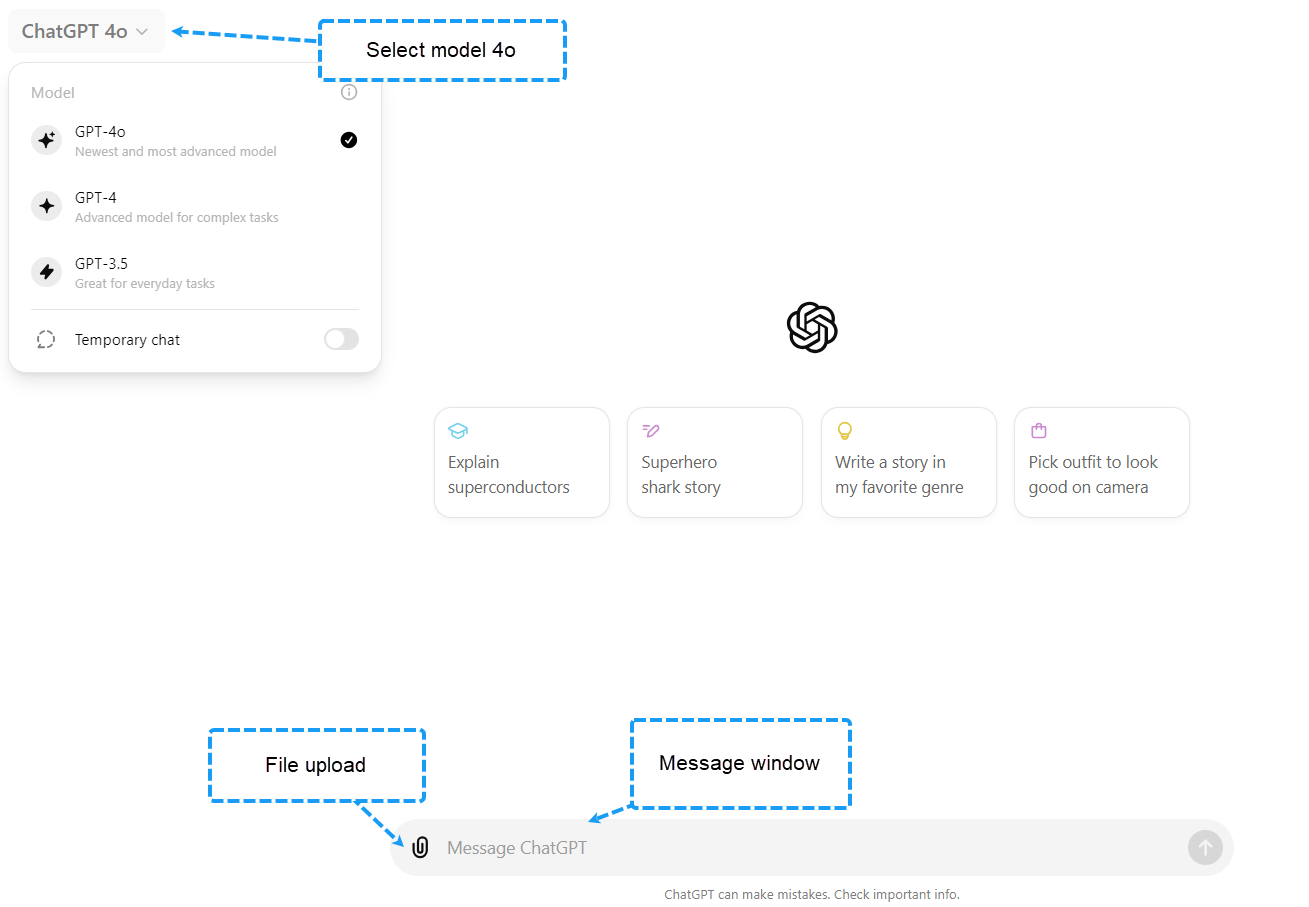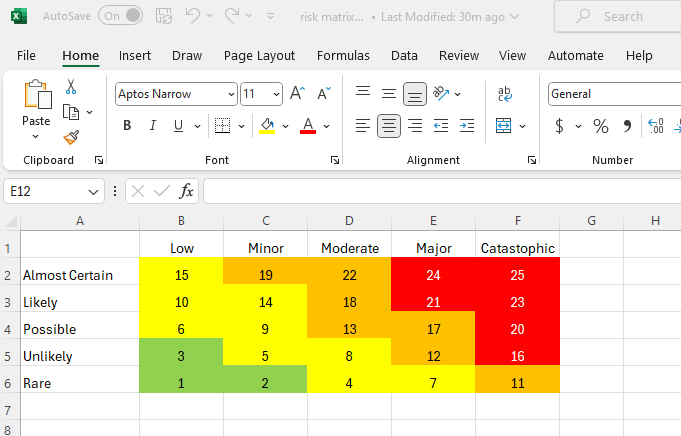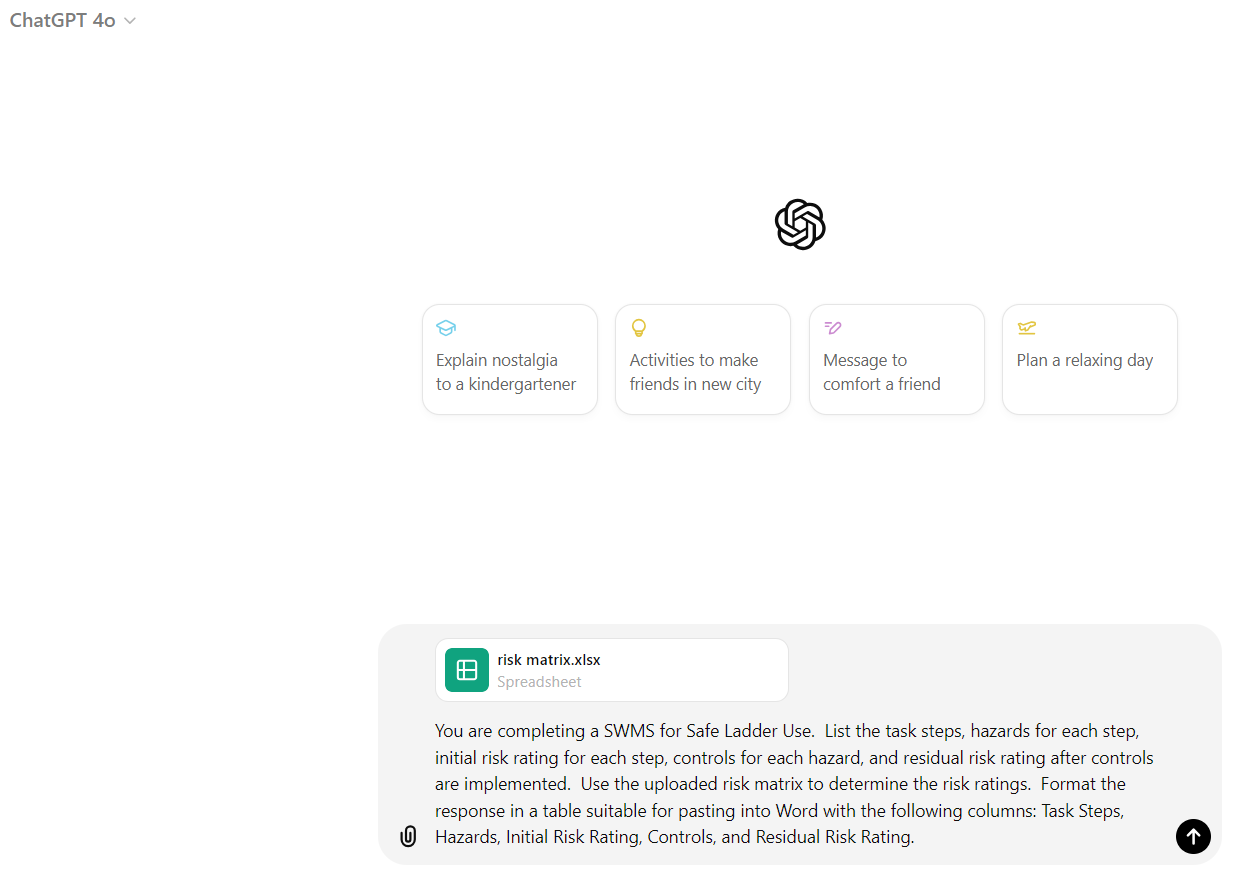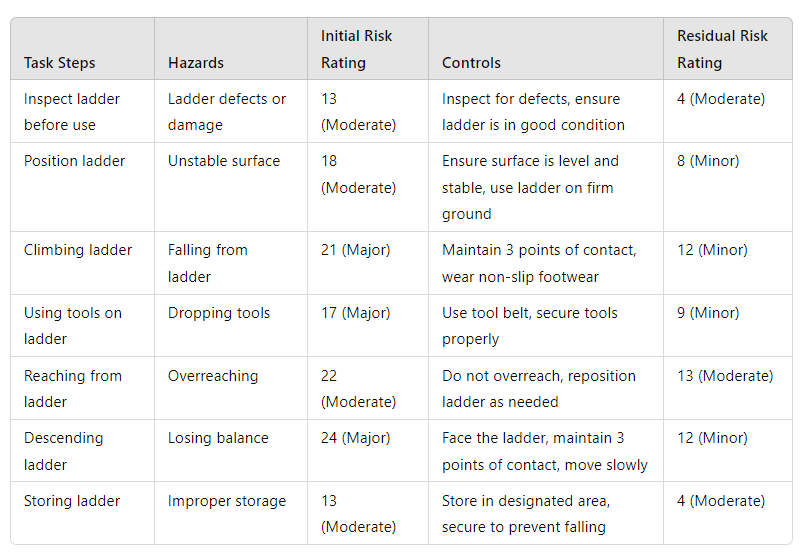At the core, AI tools such as ChatGPT are computer models that can process and recall vast amounts of data, whether sourced by the internet sources or provided directly by you.
This is a key benefit of using AI tools, and one often overlooked -
AI tools offer the advantage of having been trained on data from numerous organisations, enabling you to benefit from the collective knowledge and best practices of others.
By also uploading your own company documentation, for example your risk matrix, tools such as ChatGPT can combine these extensive learnings into a customised SWMS, in seconds, referencing your risk matrix to accurately set initial and residual risk ratings.
Before diving into the process, it’s crucial to address data security and privacy.
Any data you submit to ChatGPT from prompts to uploaded documents will be stored temporarily on encrypted servers. Your data may also be used to train models to improve performance unless you opt out of training.
If you are uploading non-confidential documents, and the data is de-identified (lacking personal information), this is generally permissible under most company policies.
For extra data security, do choose to opt out of training which can be done in the
privacy-portal. You should also check your company data protection policies to ensure compliance.
Confidential documents and those containing personal information should not be uploaded to ChatGPT free. However you may consider using tools like
Microsoft Co-Pilot which isolates data between organisations and stores it securely. Co-Pilot, which is driven by ChatGPT, is an add-on for Microsoft Office and integrates with MS Word, Excel, Powerpoint and Teams, allowing you to generate documents directly in the applications. Other third party platforms, such as
DocFactory.AI, do not use any uploaded data but can generate the SWMS directly in Word, complete with your logo.
Whichever tool you use, always keep in mind that AI can make mistakes, and generated documents should be carefully reviewed and modified as needed.
Let's go through the process of how to engineer a suitable prompt which will enable ChatGPT to create a custom SWMS for your specific company, site and task.
If you have not already done so, register an account by going to
ChatGPT and choosing "Sign up" at the bottom left.
Start a new chat. The grey message bar at the bottom is where you will write your prompts to ChatGPT. The paperclip icon allows you to upload your own documents that ChatGPT can reference when generating responses.
Make sure to switch to the GPT-4o model to ensure you are using the most accurate model with up-to-date data.

We will upload our risk matrix so that ChatGPT can refer to it when generating the SWMS document, in order to assess initial and residual risk based on our own risk matrix.
Excel format works best.
Use the paperclip icon to upload your Risk Matrix Excel file.

Prompt engineering is the process of designing and refining prompts to effectively guide AI models like ChatGPT in generating an accurate and relevant response.
Well-engineered prompts can significantly improve the quality of AI-generated content.
To engineer an effective prompt, be clear and specific on what you want the AI to generate. Providing context and offering examples can help.
For our case we will start with: "You are completing a SWMS for Safe Ladder Use."
Next we clearly define the response requirements: "List the task steps, hazards for each step, initial risk rating for each step, controls for each hazard, and residual risk rating after controls are implemented."
We tell ChatGPT to reference our own risk matrix in it's response: "Use the uploaded risk matrix to determine the risk ratings."
Finally we define exactly how we want the response structured: "Format the response in a table suitable for pasting into Word with the following columns: Task Steps, Hazards, Initial Risk Rating, Controls, and Residual Risk Rating."


Tweak your prompt to get the response you need. You might upload an example SWMS (MS Word format) and ask ChatGPT to use it as example. You could ask for more detail for the hazards or controls.
Tailor your SWMS by modifying the prompt to include specific site or job conditions. For example:
You are completing an SWMS for safe ladder use in an area adjacent to pedestrian traffic.
Notice how the response changes -

You could ask ChatGPT to provide a list of recommended Personal Protective Equipment (PPE), or competencies for the task.
It is even possible to ask ChatGPT to generate photo-realistic images for each job step if you wish to create, for example, a Safe Work Procedure.
Now that we have seen how AI can help in everyday tasks, in our next article we will take an in-depth look at the data privacy, security and ethics concerns of using AI.
Follow us for our series of articles on
Leveraging AI Tools in Everyday HSEQ Tasks, or visit our
courses page to register your interest in our
AI tools for OHS professionals course.







